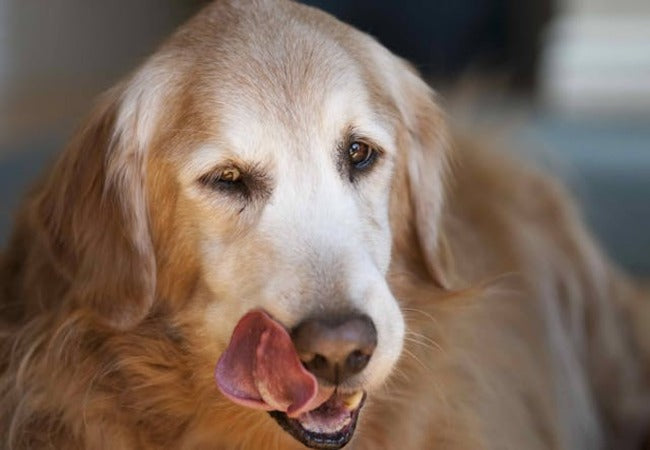Vet’s 2025 Guide to Salivary Gland Adenocarcinoma in Dogs 🩺 Diagnosis, Treatment & Care

In this article
Vet’s 2025 Guide to Salivary Gland Adenocarcinoma in Dogs 🩺 Diagnosis, Treatment & Care
By Dr. Duncan Houston BVSc
💡 What Is Salivary Gland Adenocarcinoma?
Salivary gland adenocarcinoma is an aggressive, malignant tumor that arises from glandular epithelial cells of one of the four major salivary glands—most often the parotid near the ear, followed by the mandibular, sublingual, and zygomatic glands. These glands produce saliva, essential for digestion, oral health, and lubrication.
🧠 Epidemiology & Causes
- Rare—accounts for ~7% of all canine tumors, and a significant portion of malignant oral cancers.
- Seen mostly in older dogs, any breed; no clear genetic or environmental causes identified.
🚩 Signs & Symptoms
Tumor behavior often correlates with size and invasion:
- Firm, painless swelling near jawline or beneath the ear.
- Excessive drooling, bad breath, difficulty swallowing, or a change in bark.
- Bulging eye (exophthalmos) if zygomatic gland is involved.
- Facial nerve paralysis or swelling of the lip/cheek if local invasion occurs.
- Weight loss or lethargy in advanced or metastatic disease.
🔍 Diagnosis & Staging
- History & physical exam: location, growth pace, nerve involvement.
- Fine-needle aspiration (FNA): early cytology to distinguish cancer from inflammatory masses.
- Surgical biopsy: gold standard for confirming adenocarcinoma diagnosis.
-
Imaging:
- X-rays of skull, neck, chest—evaluate local bone involvement and lung metastasis.
- CT/MRI recommended for surgical planning, margin assessment, and lymph node mapping.
- Ultrasound for abdominal metastasis screening.
- Lymph node biopsy/cytology: essential to stage metastasis risk.
🩺 Treatment Options
1. Surgical Resection 🛠
Complete surgical removal with clean margins is first-line therapy.
- Includes glandectomy and excision of involved tissue/lymph nodes.
- Large or invasive tumors may require complex skull/jaw reconstruction.
- Pre-op imaging reduces the risk of residual tissue.
2. Radiation Therapy
Used post-surgery when margins are narrow, or as sole therapy if surgery isn’t feasible.
- Conventional radiation and advanced methods (e.g., SBRT) shown to control local disease with few acute or chronic side effects.
- Complements surgery and may help with nodal metastasis control.
3. Chemotherapy / Targeted Therapies
Primarily for metastatic disease or aggressive tumors when surgery and radiation are incomplete.
- Conventional agents (e.g., platinum-based) offer modest benefits.
- Newer targeted or immunotherapeutic methods under research; SBA studies show promise in local control.
4. Multimodal Treatment
Combining surgery, radiation, and chemotherapy yields the best long-term outcomes.
- Complete resection plus adjuvant radiation often extends survival significantly.
- Ongoing SBRT research may optimize the protocol for unresectable tumors.
📈 Prognosis & Follow-Up
- Survival ~1.5 years if untreated; complete excision and radiation extend median survival substantially.
- SBRT shows durable control, with low toxicity rates.
- Prognosis depends on margin status, local invasion, nodal/distant spread.
- Long-term follow-up (at least 5 years) recommended to monitor recurrence.
🏡 Ask A Vet Home-Care Support
- 🗓️ Medication and appointment reminders.
- 📸 Photo tracking of incision healing, swelling or asymmetry.
- 📊 Monitor appetite, weight, energy, and drooling.
- 🔔 Alerts for concerning signs: recurrence, lameness, drooling, breathing, or neurological changes.
- 📚 Care tutorials: incision care, post-radiotherapy grooming, quality-of-life decision-making.
🚫 Prevention and Awareness
- Annual wellness exams help detect early gland or lymph node changes.
- Owners should report jaw swellings within 2 weeks of noticing.
- Maintain regular health check-ups—early diagnosis improves outcomes.
🔍 Key Takeaways
- Salivary gland adenocarcinoma is rare but aggressive; early detection and staging are vital.
- Diagnosis via FNA/biopsy, imaging, and nodal evaluation guides treatment.
- Surgery (with margins) plus radiation offers best control; SBRT is a modern complement.
- Chemo is used selectively; ongoing research into targeted approaches.
- Ask A Vet app enhances monitoring, communication, and owner confidence during treatment.
🩺 Final Thoughts ❤️
In 2025, effective management of salivary gland adenocarcinoma in dogs calls for a multidisciplinary approach—tumor removal, imaging, advanced radiation, and smart home support via the Ask A Vet app. With vigilant care, many dogs enjoy extended, quality life post-treatment. Owners empowered with timely detection and app-augmented support make all the difference. 🐾✨
Visit AskAVet.com and download the Ask A Vet app to schedule reminders, upload photos, track healing, and stay connected with your veterinary team—right from home. 📲






